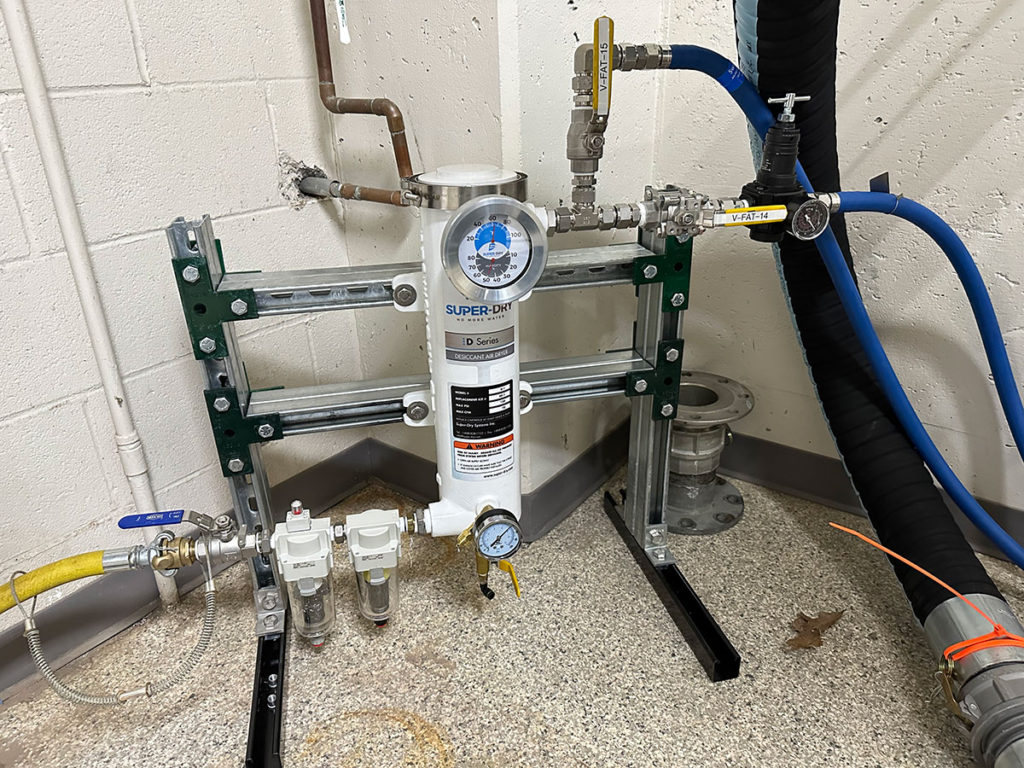Air dryers are used widely in industries as they help provide clean, dry air. A desiccant air dryer is meant to shrink the amount of moisture level in the compressed air, and it is crucial for processes and applications that require very high air quality.
Moreover, a desiccant air dryer is used mostly for applications that require an ultra-low dew point. Once you have a trustable and foreseeable dew point, it will help for applications that demand too much, such as food processing and pharmaceuticals.
In this blog post, we will discuss how a desiccant air dryer works.
What Is Desiccant?
Collecting moisture-free air for industrial use is quite impossible from the ecosystem. However, a lack of moisture elimination from the environment will not generate the same air quality and eventually damage the moisture-sensitive equipment.
Thus, a desiccant air dryer will come into play. Have you ever opened a box containing new electronics, clothing, or medicines and found a small mesh packet labeled “Desiccant. Do not eat.” The packet contains hygroscopic beads that are usually activated alumina or silica that help protect the merchandise and protect moisture during storage and shipment. Desiccant has several industrial uses. They play a vital role in drying the compressed air.
It helps remove moisture from a compressed air stream. The water vapor is substituted from the moist compressed air into the desiccant, which dries the air and eventually causes the material to be statured with the absorbed water.
Common Uses:
A desiccant air dryer is used most in industrial applications that utilize compressed air. These are the oil and gas industries. Since they use compressed air in almost all of their operations, a desiccant air dryer works best for them. It is mainly because of the moisture-sensitive equipment being used in these industries that they require this air dryer.
With the help of a desiccant air dryer, the machinery will remain in excellent condition and can be used for years.
How Does a Desiccant Air Dryer Work?
The working standard of a twin-tower desiccant air dryer is simple. It parches compressed air, rendering to the code of flexible pressure desiccant. Given a specific amount of force, the compressed air moves through the absorbent (drying) base from the bottom to the top. These air dryers contain two types of pressure vessels. These are filled with desiccants, then operated alternately via a switch-over.
So, the moisture-filled compressed air moves via a vessel below high and low temperatures, the desiccant carefully disconnects the moisture, and thus the condensed air will be waterless. Simultaneously, the moisture collected in the desiccant of the subsequent vessel is regenerated with little force. Thus, the desiccant is renewed.
For example, the desiccant in the vessel where the drying occurs is soaked with moisture, the vessels are substituted, and the activity will begin again. One whole course of desiccant and restoration in a vessel is called a cycle; the cycle time is required. The substituting stage is between 120 to 240 minutes approximately. You can set it as required, and its functioning will be exhibited on the controller’s front panel.
This sequence of fiery desiccant compressed air dryers implements a smart switch with cutting-edge technology to mechanically regulate the complete air-drying practice, boost the air sanitization impact, and decrease power loss.
The Installation Process:
One should start by pouring a solid foundation by looking at how big or small the equipment is. Then they can fasten the equipment with the help of ground screws. It is, however, important to remember to place the machinery in an open area, even if it is inside. It should not be glued to the wall but rather at a distance of one meter unless it is a wall-mounted style unit.
It is crucial to note the flexibility of the machinery when installing it. The machinery should be attached correctly; fixing it after use is important. You must be sure to install the pipelines in a straight manner. For optimal security, dangerous voltage electric parts need to be successfully fixed. The pipe’s height should be much under the equipment’s opening height; if it isn’t much, it will trigger a chunk of the liquid backflow and impact the regeneration. It is crucial to help prevent rainwater from entering.
Usage:
The right way to use this equipment is in a danger-free zone with no threat of an explosion. The room should also be such that it will be corrosion free.
The pressure measure system on the filtering pressure-reducing valve must be checked regularly. It will help prevent damage to the cylinder by overpressure.
Maintenance:
When the desiccant air dryer has been used for a long without ever changing the air-drying system, and you feel that the equipment is working as it used to, but the dry air is not reaching the dew points, know that the desiccant must be changed and upgraded.
You need to keep a check on the upkeep of the security valve. Both cylinders must be checked routinely to help see the pressure vessel testing techniques. The manual drainage should be checked, and the machinery needs to be grounded as firmly as possible.
Final Verdict
There are several air-drying systems available in the market. However, not all can be compared to a desiccant air dryer. They are not as effective and fast at drying the air from the environment. It is best to seek a trusted name for all your air-drying solutions before purchasing a desiccant air dryer for your industrial process.


